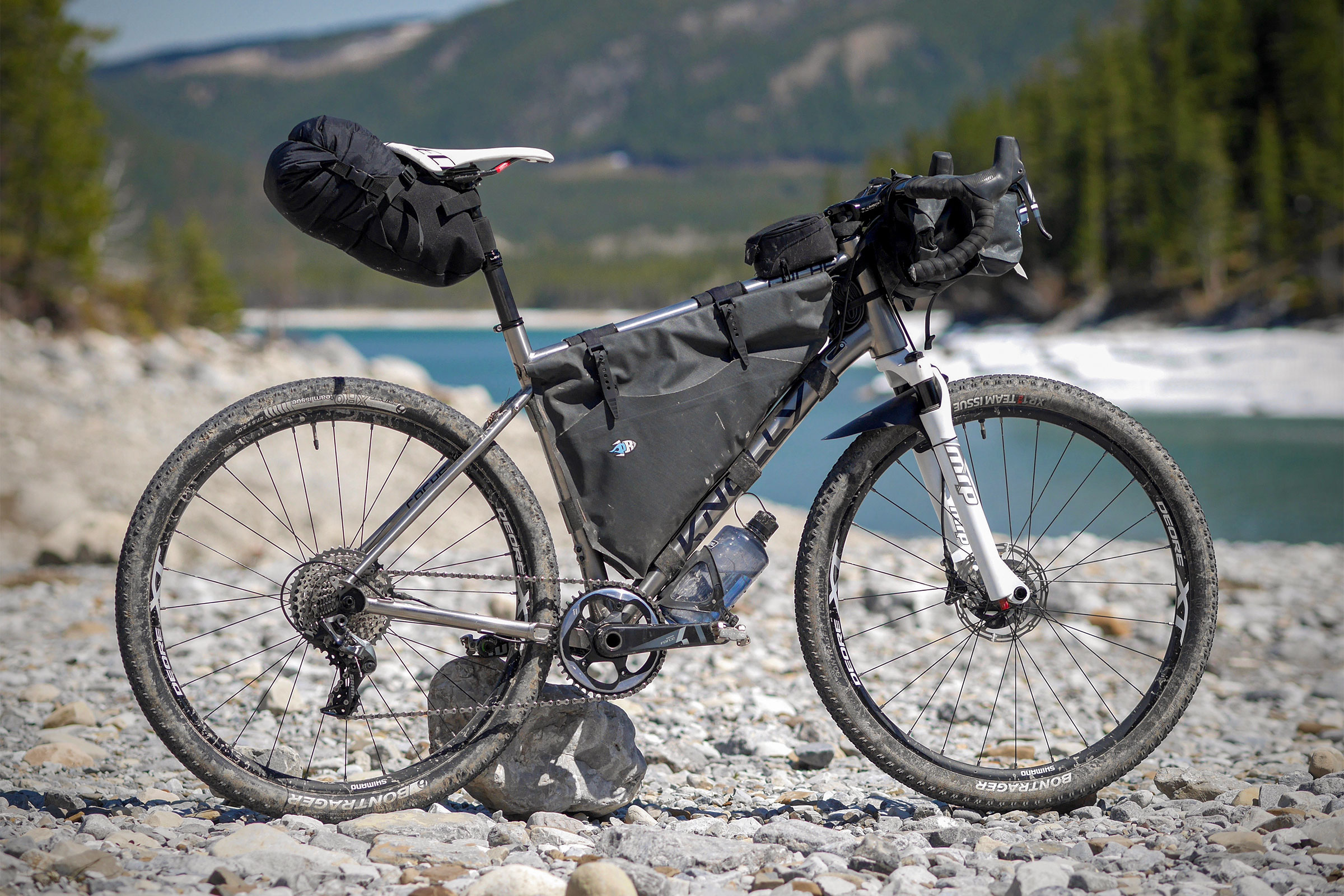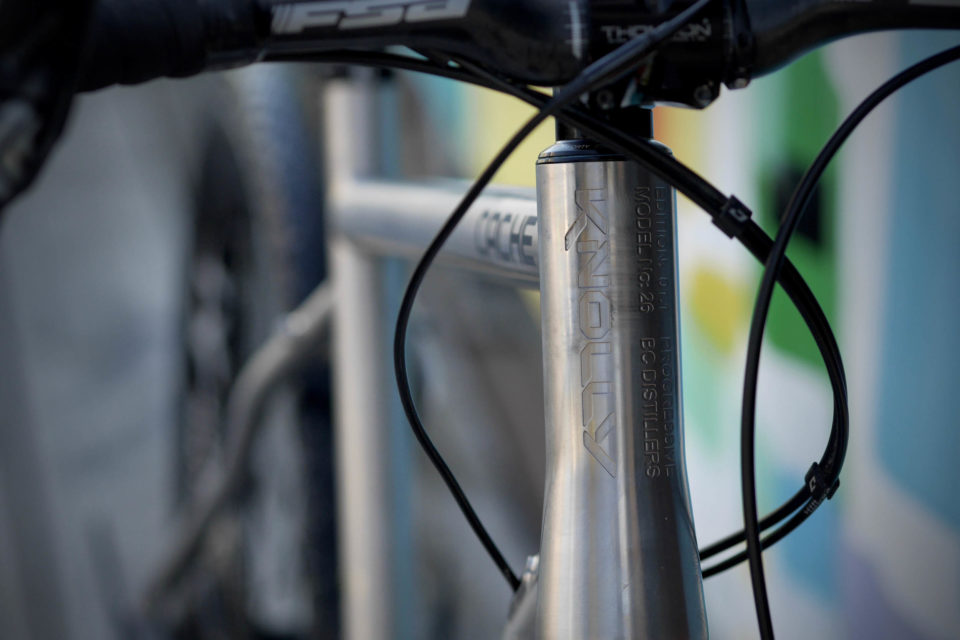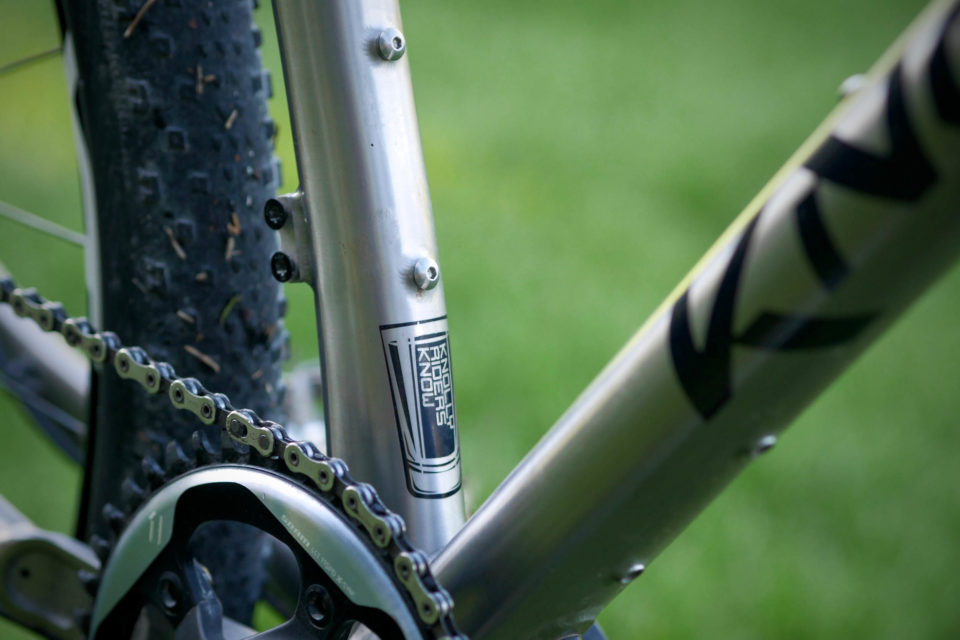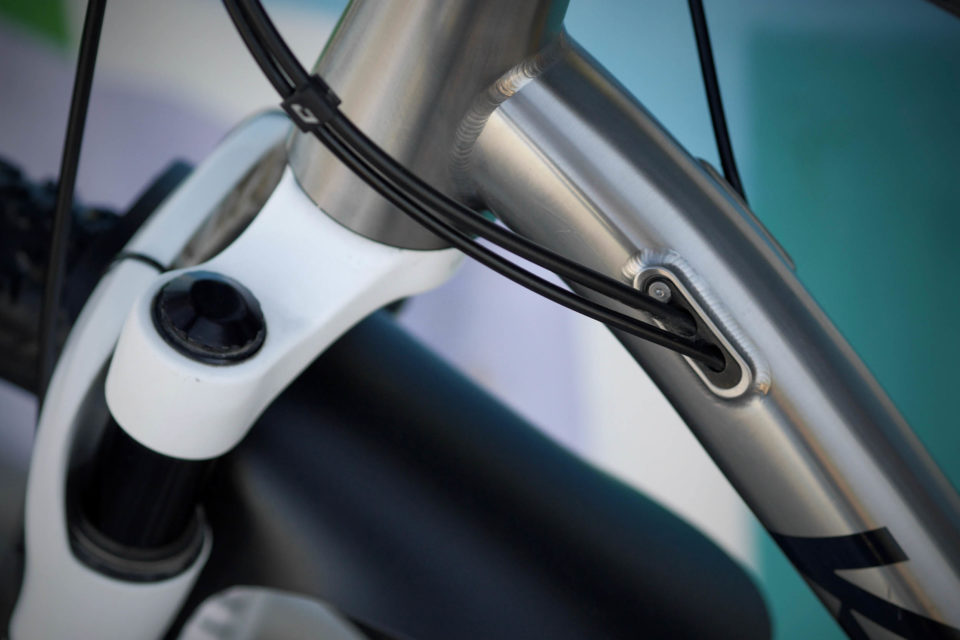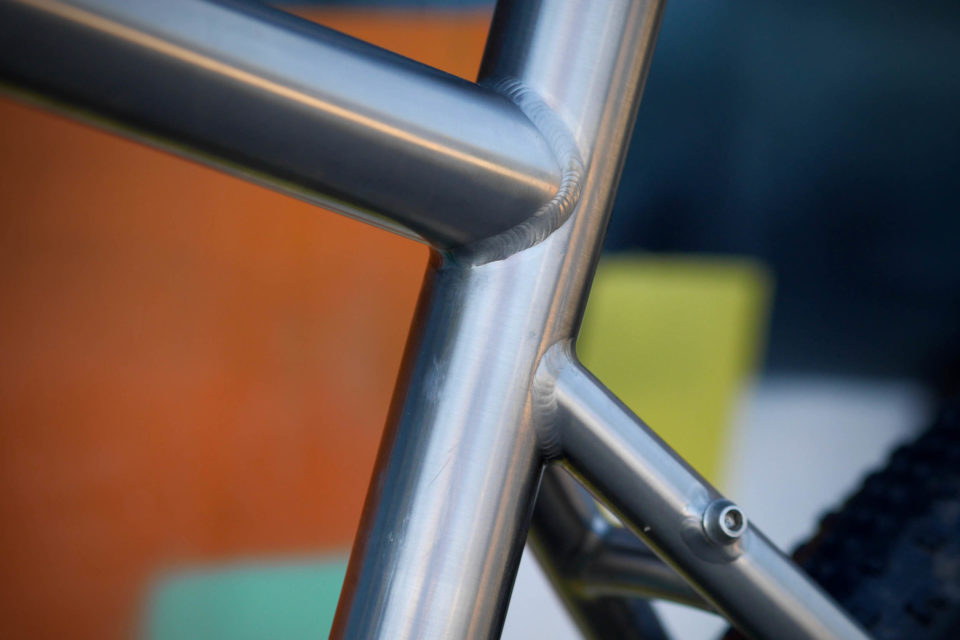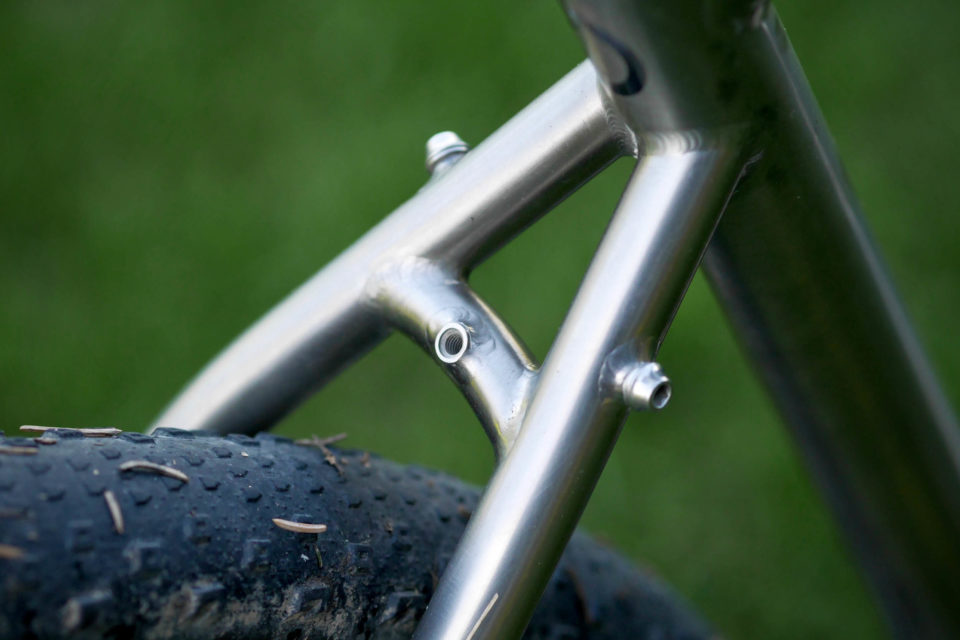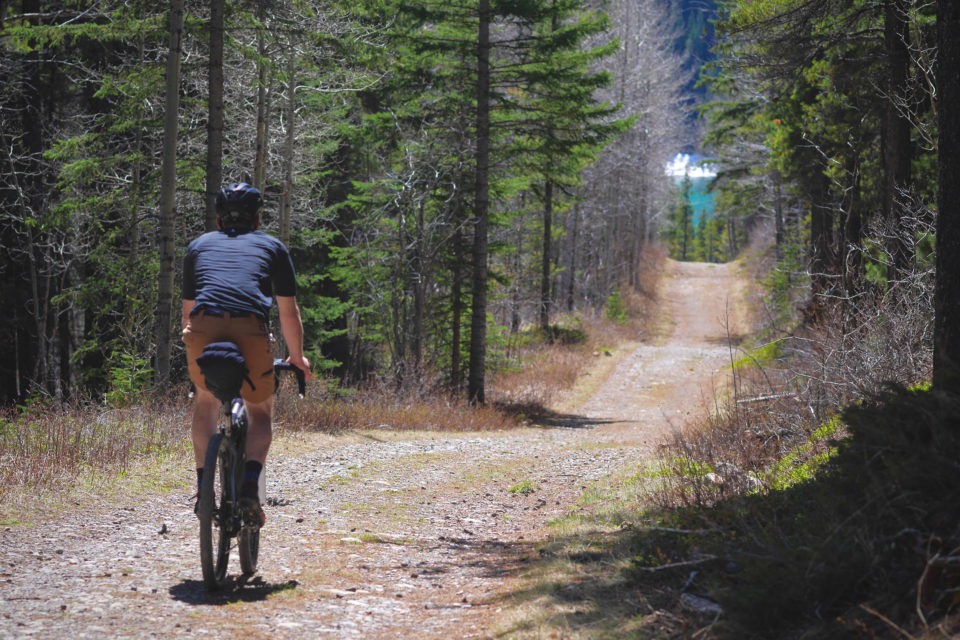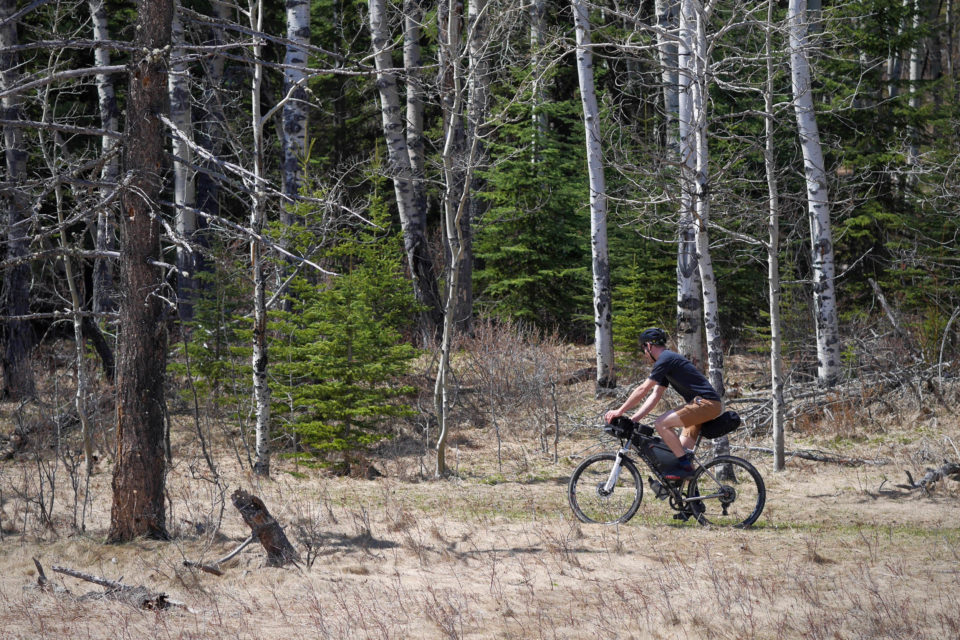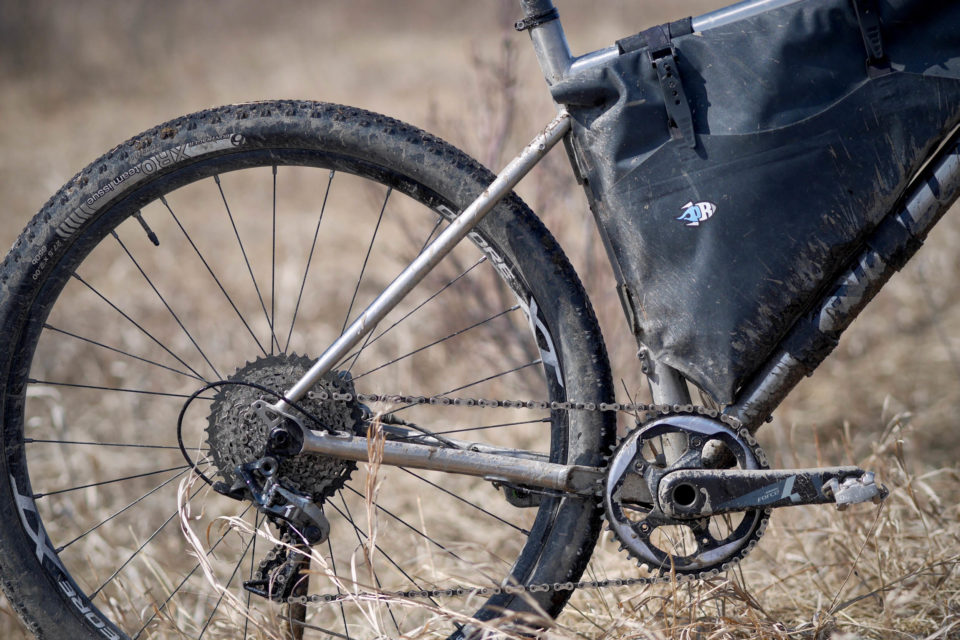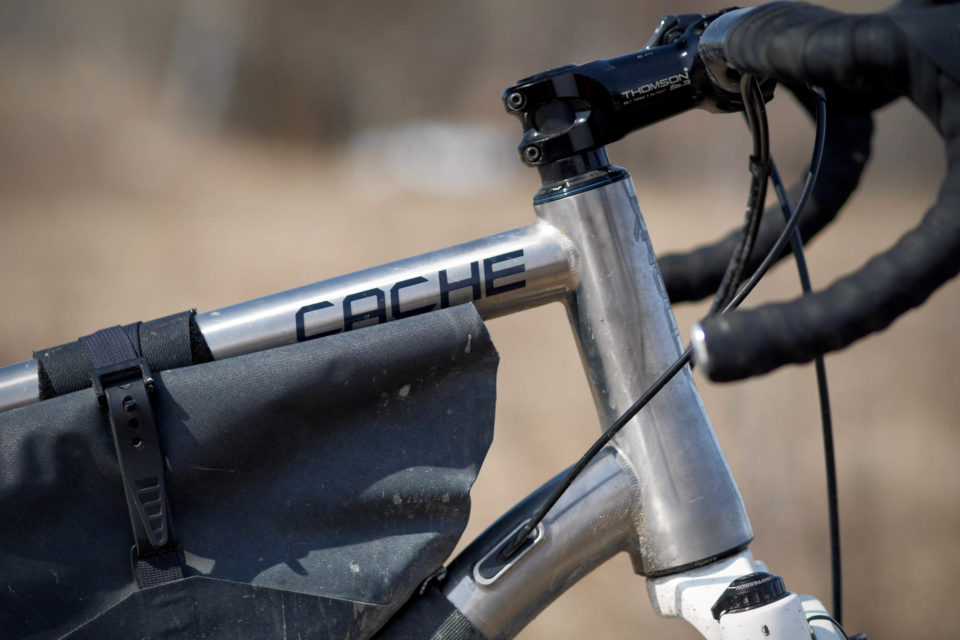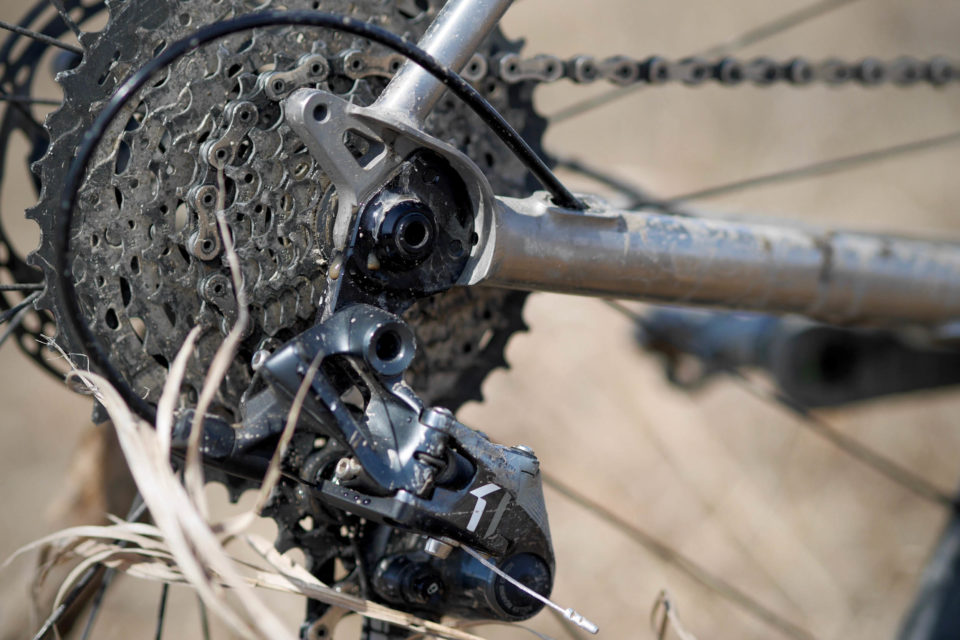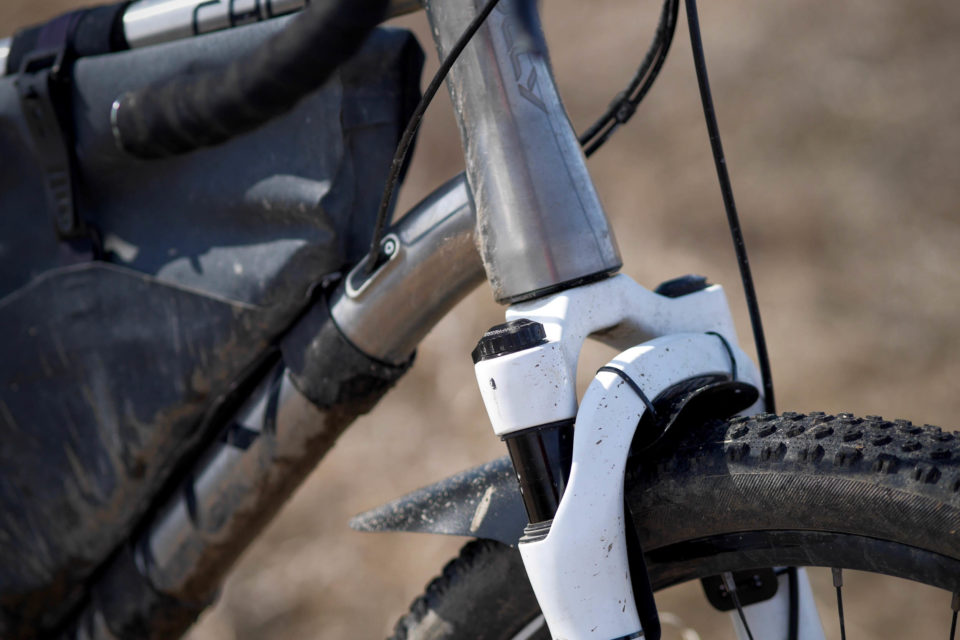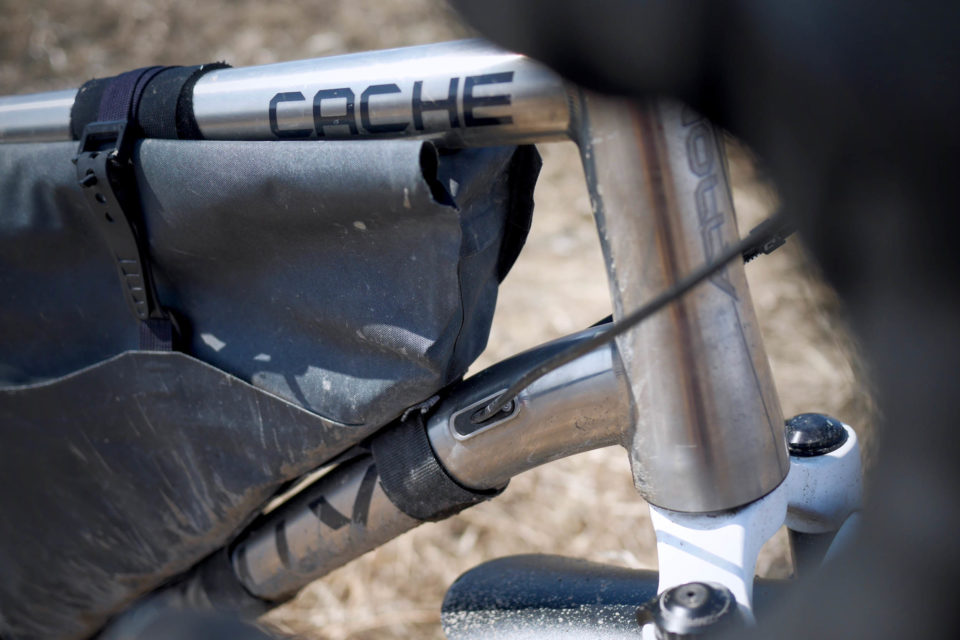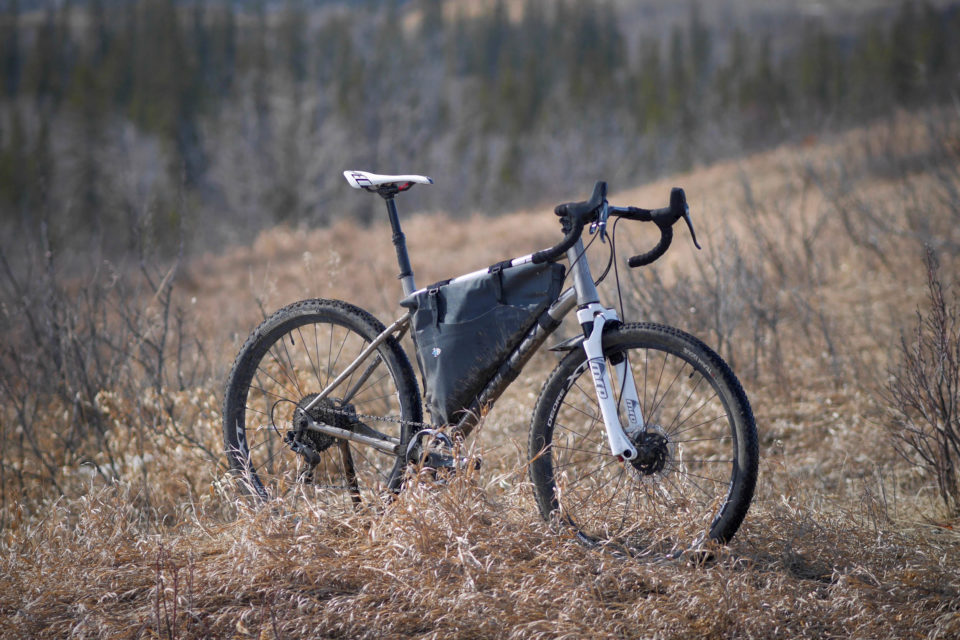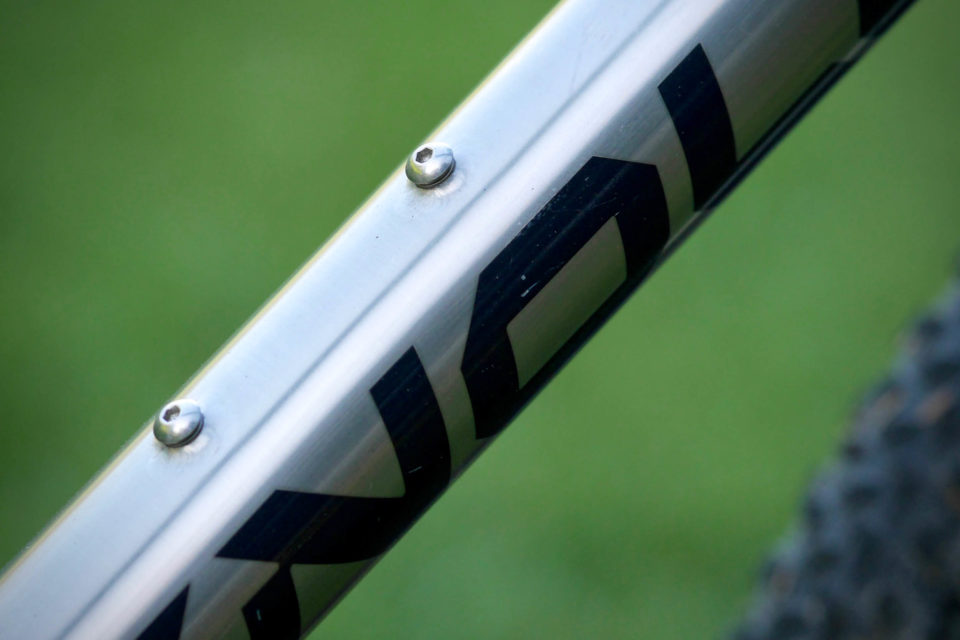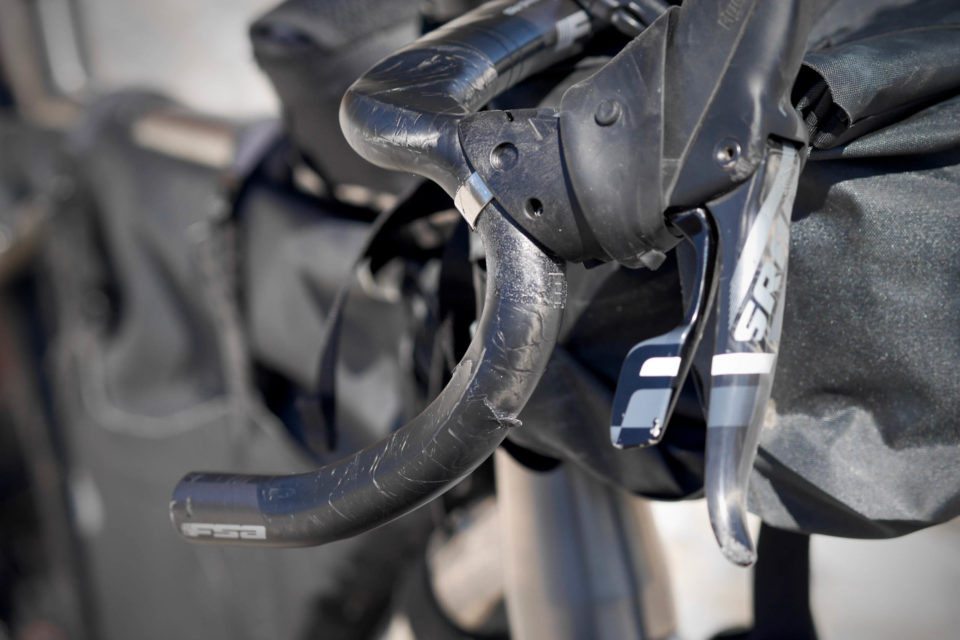Knolly Cache Review (Ti): The Underbiker’s Uberbike?
Share This
With drop-bars and a 40mm suspension fork, skeptics feared that the Knolly Cache was a gravel bike with an identity crises. To uncover the truth, Hank Hansen tested the titanium model and came back with some interesting conclusions in this in depth review…
Words by Hank Hansen (@karl.hummus), photos by Skyler Des Roches (@skrambles)
At first glance, innovation can sometimes look a bit… funky. That was the word that came to my mind upon seeing Knolly’s Cache Titanium when it was first teased in late 2018. Photos from Crankworx showed the bike dressed in a contrasting mix of 700c wheels, dropper post, carbon road bits, and a stark white MRP Baxter suspension fork. Was this a bike with an identity crisis? Or was it a progressive, have-your-cake-and-eat-it-too drop-bar bike designed for people whose idea of ‘gravel’ riding involves less grinding and more sending? My interest was piqued.
Fast forward a year to fall 2019, when the opportunity to test the Cache magically presented itself (1). Knolly gave me the option of assembling the bike myself from the frame up, which I accepted, not only because it’s a great way to get some initial impressions of a bike before riding it, but also because I’m a weirdo who enjoys spending several hours alone in a windowless basement, listening to Charli XCX and obsessing over a bike that isn’t even mine.

The Frame
The first thing that struck me about the Cache was the finish quality of the frame. Maybe I shouldn’t have been surprised: a frame that costs more than 3,500 Canadian bucks should be immaculate. All the same, the Cache did not disappoint. I’m no materials expert by any means, but I found the welds to be neat and consistent and all the contact interfaces (headtube, bb shell, dropouts, seattube) to be flawlessly finished.
As a card-carrying member of the Bitter Bike Mechanics Guild (BBMG), at this juncture I am required to state for the record my distaste for internal cable routing. With that formality out of the way, I did appreciate the Cache’s access port in the lower downtube, above the BB, which made cable routing a more tolerable process. Getting the dropper post routed was still a bit of a faff, as the housing exits the frame near the headtube rather than at the bottom of the seattube, but I emerged victorious with only minimal swearing.
Knolly also won back some points with the BBMG by putting threads in the BB shell (hallelujah!). Furthermore, the design and machining work that went into the chainstay/BB junction is quite slick, as it allows for the use of a 68mm wide shell while also creating clearance for a 2.1” tire, and looks cool to boot. The sharp looks continued at the fore, where etching adorned the headtube in the place of a more traditional badge or sticker, and invoked daydreams of lasers and whiskey. It has zero impact on the functionality of the bike, but still, nice things are nice.
The Spec
In the early going, I expressed to the fine folks at Knolly a preference to test the most mountain-bikey version possible of the Cache, in order to really lean into the ‘gravel bike for MTBers’ image. This meant dropper post, 1x drivetrain, suspension fork, and wide tires (Toyota Tacoma and flannel shirt implied but sold separately). And for the most part, this is exactly what I got. The Shimano M8020 wheels, while amusingly out of fashion as a ‘trail’ wheelset in 2020, work great as a 650b gravel option, with the 24mm internal rim width nicely supporting tires around the 2” mark. The 15mm front axle, however, did have to be reduced down to 12mm in order to fit the MRP Baxter fork.
- Highlights (58cm)
- Angles: 71° Headtube, 74° Seattube
- Reach/Stack: 417mm / 616.5mm
- BB Drop/Chainstay: 75mm/422mm
- Bottom Bracket: Threaded 68mm
- Hub specs: 142 x 12mm (rear)
- Seatpost Diameter: 31.6mm
- Max Tire Size: 27.5 x 2.1”
I could probably devote an entire article to suspension forks on drop-bar bikes: are they the innovation that our wrists have been waiting for, or just the latest example of the bike industry’s adapted theory of eternal recurrence? I won’t get into it too deeply here, other than to admit that I definitely lol’d at the idea of the Baxter… until I rode it. Turns out, it works well, and is a logical complement to any drop-bar bike designed to thrive in the rough stuff. Sure, 40mm of travel isn’t a lot, but it’s enough to neutralize any substantial root, rock, or curb that might otherwise require extra attention or a different line choice. Will my next gravel bike have a suspension fork on it? Probably not, but for a certain subset of riders, I get it now.
SRAM’s tried and true Force 1 drivetrain set up easily and performed flawlessly throughout my time with the bike. My only drivetrain quibble was the gearing; maybe the folks at Knolly mistakenly thought they were sending this bike to someone fit, but the 44t chainring that came installed was more than enough juice for yours truly. For any kind of longer trip or especially hilly terrain, I definitely would have switched to a 40. As far as deceleration was concerned, I didn’t love the Force brakes’ touchy lever feel, but I can’t deny that their power and modulation were both great.
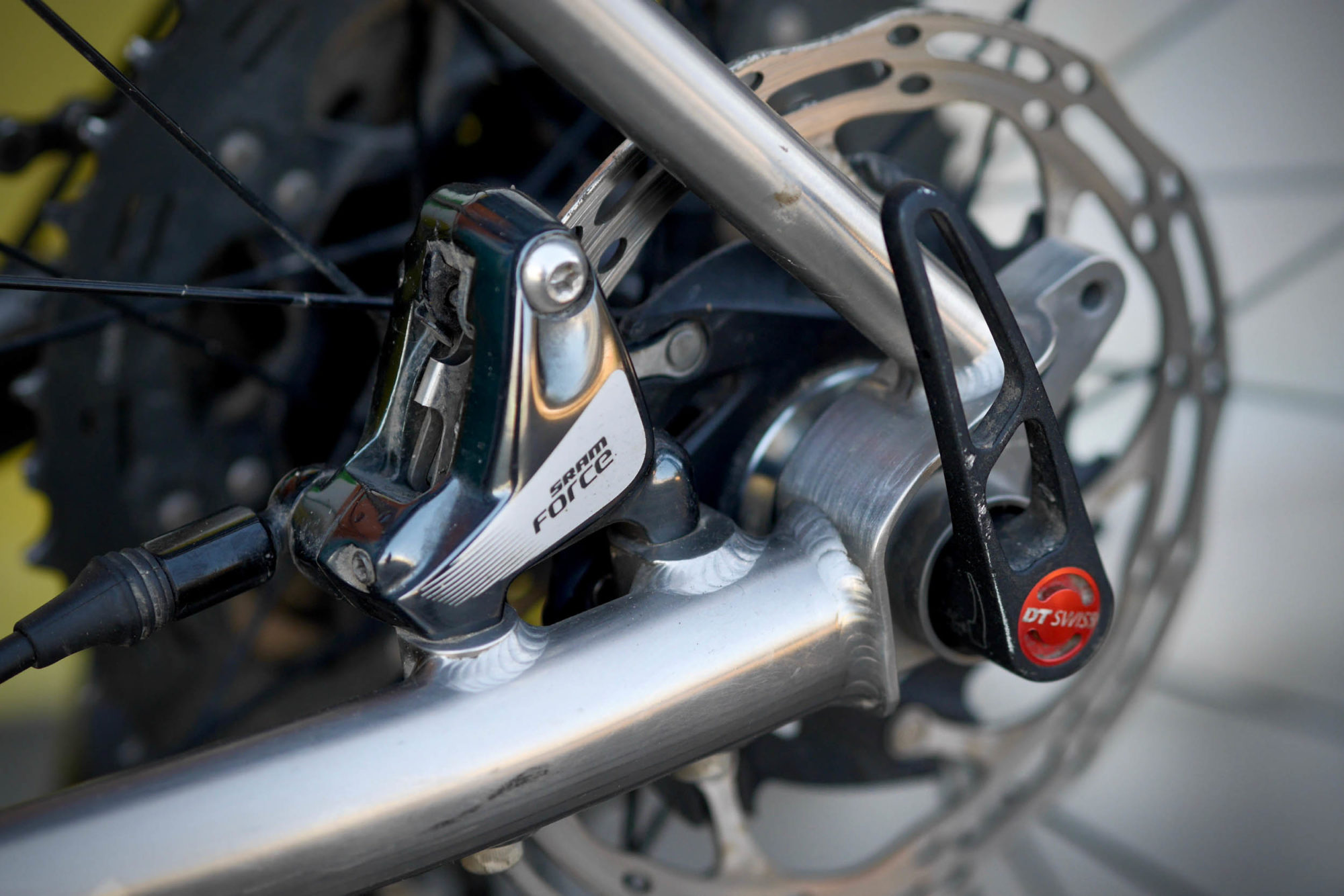
Speaking of brakes, can we talk about the flat mount standard for a second? It’s pretty wack. I can understand flat mount calipers on road bikes, where shaving grams and drag is what people care about. But boy howdy do I wish manufacturers would stick with post mount brakes everywhere else. In addition to enabling broader compatibility, rotor sizes above 160mm, and ease of adjustment, it also would have saved the headache that ensued when I realized my Cache arrived with flat mount brakes front and rear—and a fork that required post mount calipers. After learning that the Baxter also wouldn’t fit a flat-to-post adapter (oh, what a time to be alive!), I swapped on a post mount caliper in the front, re-bled the brake, and all was well.
Elsewhere on the spec sheet, the 125mm KS Lev CI dropper post handled its up-down duties with aplomb, though my long inseam could have happily accommodated a longer drop. Mirroring current trends in the tailgate pad sector, the sloping top tube and shorter seat tube of the Cache are tailor-made for squeezing in heaps of post travel on all frame sizes, despite Knolly’s stated perspective that “we know 90% of our riders won’t run a dropper post on this frame.” Maybe, but I’m 100% on board with droppers and drop-bars. Bold prediction: they will be on the majority of gravel bikes in three years.
That prediction is based on the ability to actuate the post via our old pal the left shifter, now desperately in search of a purpose in the post-front derailleur world. No such luck on my test bike, which instead came equipped with a svelte carbon KS remote. Because of the shape of the FSA K-Wing AGX Carbon handlebar, the lever’s round 31.8mm clamp could only be mounted right up against the stem’s faceplate. This meant having to move my hand all the way inboard on the bars any time I wanted to use the dropper. It might not sound like much, but for me the extra effort definitely detracted from the utility of having a dropper in the first place. I absolutely want a dropper on my next gravel bike, but I’m convinced that being able to drop it and pop it from the hoods is the winning configuration (2).
One other note on the AGX bars: in addition to not really vibing with a dropper lever, the ovalized tops of the bars presented some issues with mounting bags. The straps of my Porcelain Rocket Nigel, for instance, are about 13cm apart, which put them directly on top of the uneven tapered section on either side of the stem. This made the bag want to scoot itself off-center and get all up in the business of my index fingers when I was riding on the tops. That said, the ergonomics and damping properties of the AGX bars were excellent, but the lack of usable mounting real estate was a moderate bummer in my book.
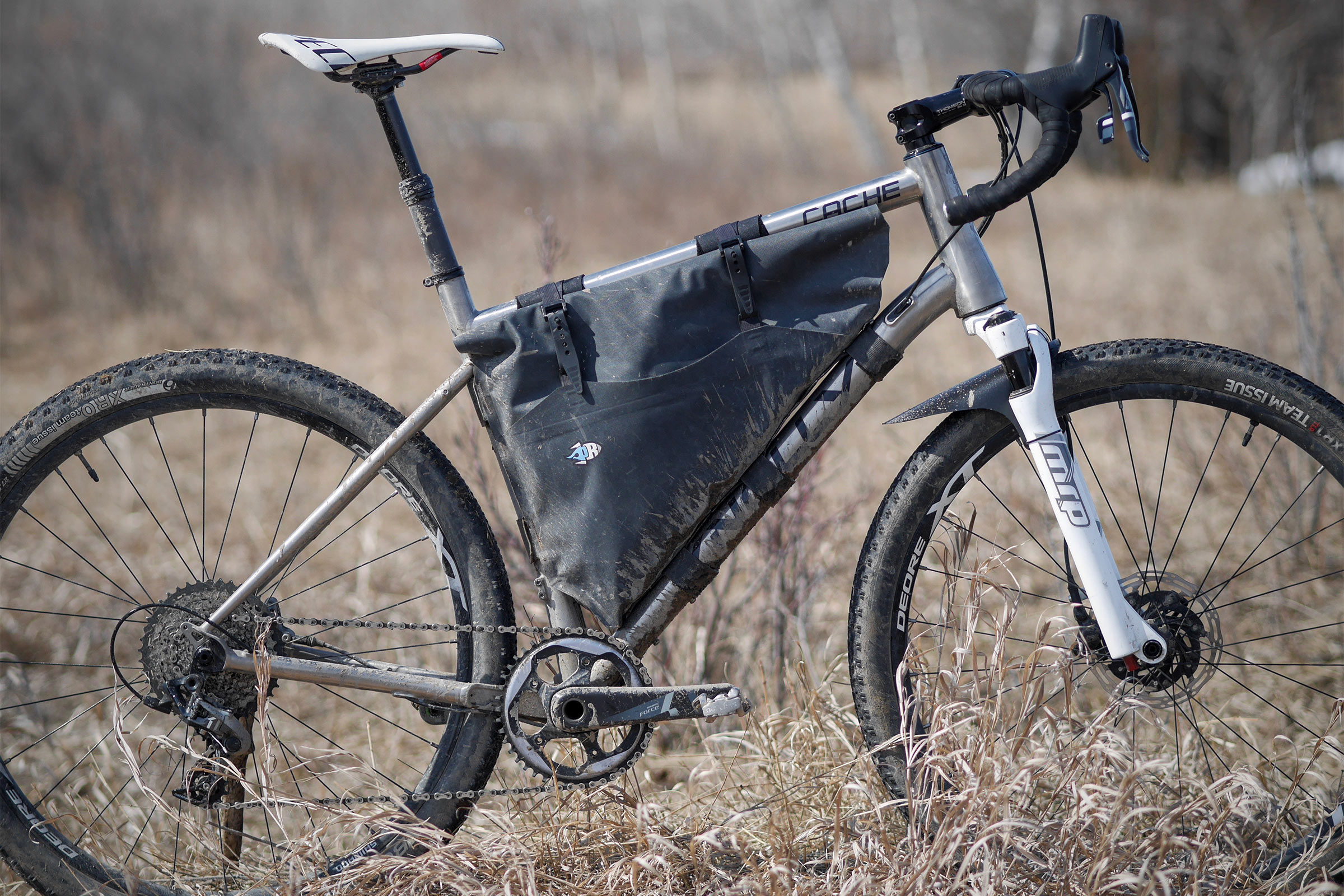
Geometry / Sizing
Probably the Cache’s biggest calling card, especially at the time of its release (3), is its forward-thinking, mountain bike inspired geometry. The 71 degree head angle found throughout the size range is slacker than many bikes in its class by about a degree, and the reach is extended to put the rider’s center of gravity farther behind the steering axis. The wheelbase also runs notably longer than the norm for the ‘gravel’ category, while seattube length and standover height are reduced for clearance, maneuverability, and more room for the aforementioned dropper post. Taken all together, it’s a subtle progression rather than a radical change, but the Cache’s geometry really does feel like a no-brainer for a bike like this. I’m a big fan of underbiking, and have spent ample time riding janky singletrack on old cyclocross bikes. Riding the Cache made me seriously question whether I ever want to go back to riding drop-bar bikes with traditional, twitchy geometry again.
Innovative geometry can make it a bit trickier to find your size though. I’m a leggy 6’1” and almost always ride an XL mountain bike; with road bikes it’s a bit murkier, but what most manufacturers would call a 59cm typically works best for me. After spending a few days endlessly consulting the geo chart of every bike I’ve ever owned, I finally decided that I’d probably be a better fit on a 60cm than a 58cm. But the universe had other plans, and I received a 58cm to test instead. To dial in the fit, I ended up bumping up to a 90mm stem instead of the recommended 80mm, and with my long-ass legs I had enough seatpost showing that I could install a 170mm dropper if I wanted to. But all the same, it totally fits. And if you’re someone who likes a more maneuverable and playful setup, staying with your usual size on the Cache might make more sense. On the other hand, if you’re in between sizes and want to really maximize the impact of the Cache’s signature geo, I would recommend sizing up.
Unfortunately I didn’t get a chance to test a 60cm with a shorter stem, but I suspect that it would further play to the bike’s strengths: stability, smoothness, and mixed-terrain capability. Riding the 58cm with a longer stem, there were times when the front of the bike still felt more under me than in front of me. For the Cache’s longer front-center to take full effect, I think sizing up would have been the ticket, but all the same, I was totally comfortable on the 58cm, even on longer rides.

Riding the Cache Ti
You know that old bike review trope, if the bike was a pastry item, which one would it be? No? Well, anyway, the Cache Ti would obviously be a well-made cannoli. Both are carefully engineered indulgences that, despite their hard exteriors, are characterized by a soft-not-soggy core that is a delight to the consumer. Or maybe I’m just hungry. Point is, the Cache Ti is smooth.
What makes this bike so delightfully compliant? It’s one of the primary questions I kept coming back to while testing the Cache. To be sure, 50mm tires at 30psi can go a long ways towards neutralizing crappy roads, as can a 40mm suspension fork. But the more I played around with different setups, the more it became clear that Knolly really has done something special with the Cache frame, something beyond the inherent attributes of titanium. According to Knolly, each of the seven frame tubes comprising the Cache Ti frame are custom shaped, and forming them required the development of entirely new tooling at the production level. The pièce de résistance of all this shiny metal nerdery is the frame’s seattube, which is tapered, butted, and bent, a combination that, they claim, is unprecedented on a production frame.
It’s easy to talk about a titanium bike and how it, like, rides real good and stuff. But in the case of the Cache, that goodness comes not just from the metal itself, but also by way of the labor of love that went into arranging said metal into a minor masterpiece. The best word I can conjure to describe how the Cache rides is lightness. Not that the bike is light, necessarily; I haven’t weighed my test bike, but with fork and dropper I’m sure it’s north of 10 kilograms. No, I mean that the Cache floats without wandering; it is forgiving but also sprightly. It neatly inhabits the exclusive margin between compliance and responsiveness, where neither side sacrifices anything in compromise with the other. The Cache Ti’s geometry subtly stretches the limitations of what the bike can do; its frame construction pushes even further, delivering on the promise that not only will it handle almost anything you throw at it, it will do so joyously.
Parting thoughts
Regrettably, a particularly persistent Alberta winter, followed by a global pandemic, have thus far prevented me from taking the Cache on any longer trips. On the question of whether the bike would be suited for the rigors of weeks or months long off-road forays, I’m unable to answer definitively. On the one hand, the Cache’s compliant ride and confidence-inspiring geometry are perfectly suited for long days on sketchy terrain. The rear rack mounts are a thoughtful addition, and my 58cm frame had enough space to squeeze in an XL Porcelain Rocket 52Hz framebag. Loading the front end of the bike, however, is less user-friendly, as neither the MRP fork nor Knolly’s own rigid carbon offering have any mounting points for cargo. Because standard width drop bars also limit the options for bar-mounted bags, getting a full load onto a stock Cache would be tough. Switching to an ultra-wide drop bar (or flat bar), and/or installing an aftermarket fork, would do the trick, and I suppose some ultra-light packers might even be able to do without. I was able to fit enough gear for an overnighter onto the bike using just a seatpack, frame bag, and an assortment of smaller bar bags, but I was close to max capacity.
In addition to a rigid fork with mounts, I also would have liked to see more tire clearance on the back end of the Cache. While Knolly claims clearance for a 650b x 2.1” tire, the 2.0” Bontrager XR0 I used on my test bike left very little daylight between the stays. I think a true 2.1” tire in any kind of muddy terrain would become an issue pretty quickly. I also would’ve really appreciated adjustable rear dropouts on the Cache. Singlespeed adaptability can be a lifesaver when mechanicals strike at inopportune times, and an extra few millimeters of rearward adjustability might have also potentially helped address the tight tire clearance.
Build Kit
- Frame Knolly Cache Titanium (58cm)
- Fork MRP Baxter 40mm Travel
- Wheels Shimano XT M8020
- Tires Bontrager XR1 27.5 x 2.0” (front) / XR0 27.5 x 2.0” (rear)
- Headset Cane Creek 40 ZS
- Stem Thomson X4 90mm
- Handlebar FSA K-Wing AGX Carbon
- Seatpost KS Lev Ci 31.6 x 125mm
- Shifters SRAM Force 1 Hydro
- Brakes SRAM Rival post mount (front) / Force flat mount (rear)
- Rotors SRAM Centerline, Centerlock, 160mm (front) / 140mm (rear)
- Crankset SRAM Force, 172.5mm
- Derailleur SRAM Force 1
- Cassette Shimano CS-M8000 11-42t
- Saddle Specialized Phenom Pro 143
- Frame Bag Porcelain Rocket 52Hz
- Handlebar Bag Porcelain Rocket Horton
- Seat Bag Beowulf Industrial Sewing
- Price Frame: $2,699 USD
- Place of Manufacture Taiwan
- Manufacturer’s Details KnollyBikes.com
Pros
- Impeccable ride quality thanks to the uniquely engineered titanium frame.
- Subtly progressive geometry feels intuitive and comfortable on a variety of terrain.
- Dropper post and suspension fork compatibility make it easy to configure the bike for terrain that goes beyond typical gravel riding, while rack, fender, and front derailleur mounts allow for more traditional setups.
Cons
- Tire clearance not quite as advertised.
- Stock fork has fender mounts but nothing for cargo.
- Price is on the higher side for a non-domestically produced titanium frame.
Wrap Up
So, is the Cache Ti for you? Leaving aside budget for a moment, as that’s obviously the bike’s primary barrier to entry, the Cache is an impressively versatile bike that should appeal to a demographic well beyond gravel-curious downhillers. Imagine your ideal ‘gravel’ ride. Does it feature long stretches on tarmac, graded roads, and a scarcity of sketch? You’d enjoy the Cache for sure, but I don’t know that I could make as compelling an argument to choose it from the burgeoning heap of big-tired road bikes on the market today. On the other hand, if your rides usually include enough singletrack and bombed-out backroads to justify riding a mountain bike, but also enough time on pavement that you for sure don’t want a mountain bike… yeah, I’d take a good long look at the Cache. With the right spec it’s capable of just about anything, and it feels fairly divine while doing it.
The Cache Ti is pricey, even for a titanium bike, but the amount of R&D that went into its creation at least explains, if not justifies, the price tag. And while I can’t speak to the ride qualities of the recently released steel Cache, the fact that it comes in at less than half the price of the titanium version but has the exact same geometry and features is definitely appealing. With the Cache Ti, Knolly has infused some delicious funk into the gravel bike arena. Although my experience with spec and setup was mixed, the frame itself is an accomplishment of which Knolly should absolutely be proud.
Handlebar addendum:
While shooting some photos of the Cache, towards the very end of this review process, the bike was knocked over by a gust of wind from where it had been propped up. The handlebar snapped upon impact with the ground, at the midpoint of the drop. While I totally recognize that this is more of a fluke than anything, I was nonetheless pretty surprised at how easily the bar failed. My main takeaway from this is not so much that the FSA bars were flawed, but rather to seriously reconsider whether I would ever elect to run a carbon drop bar for bikepacking, especially one that is light and not specifically intended to take extra abuse. Oh, and also that breaking a $300 handlebar on a test bike really sucks, so if anyone at FSA happens to be reading this and takes pity on a poor bike mechanic, hit me up!
Footnotes:
(1): Thanks, Skyler.
(2): Sure enough, Shimano’s GRX group now has a lever designed to do just that, as well as the whole AXS Reverb thing, if you’re fancy like that. Hacking a SRAM Doubletap lever to actuate a dropper is also easily done.
(3): In the era of PCH, or pre-Chamois Hagar.

About Hank Hansen
Hank Hansen grew up in Northern California and currently lives in Calgary, Alberta, with his wife Shasta and beloved cat Maku. His idea of an ideal day would probably entail riding around in the woods all day and ending up at the Oakland Coliseum for an A’s game. You can follow him on Instagram @karl.hummus to see pictures of his cat and occasionally some nerdy bike stuff.
Please keep the conversation civil, constructive, and inclusive, or your comment will be removed.






